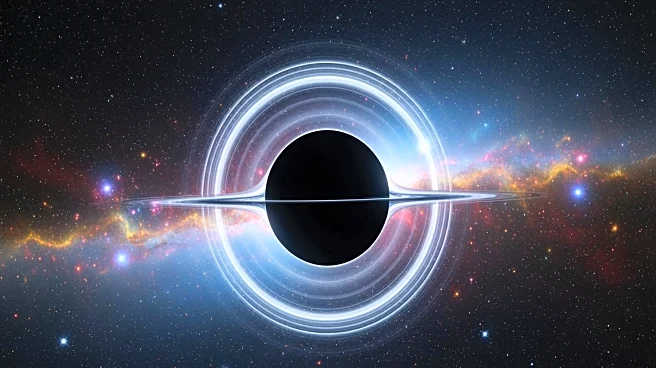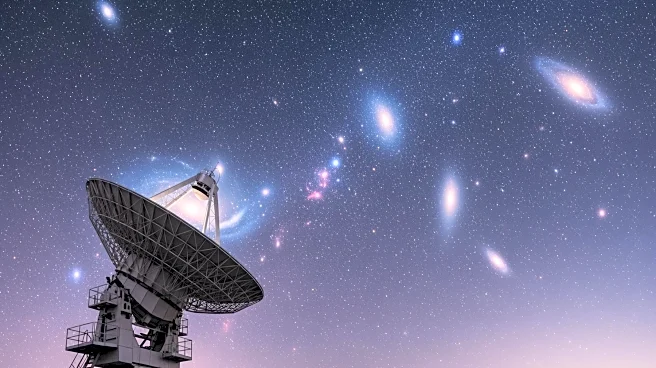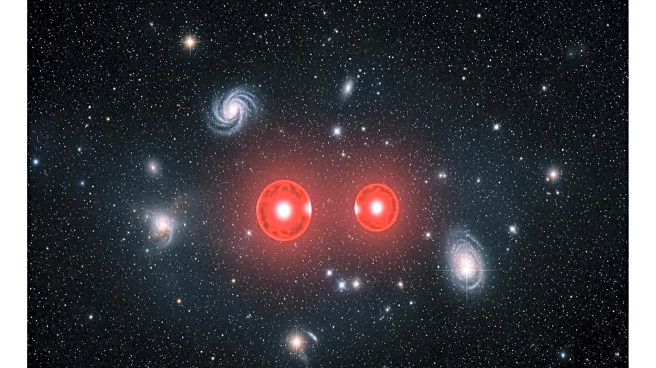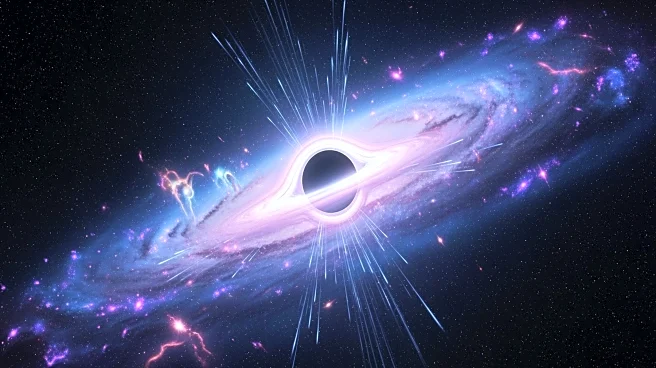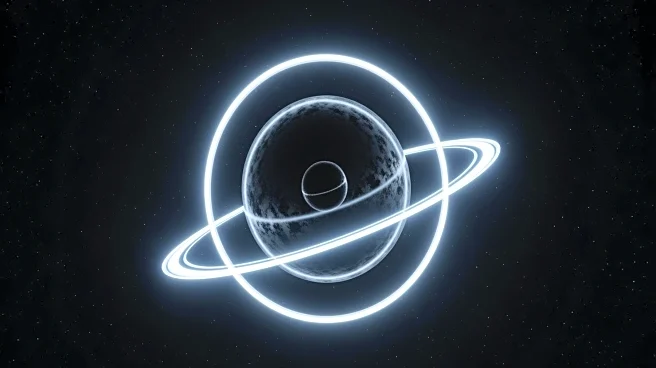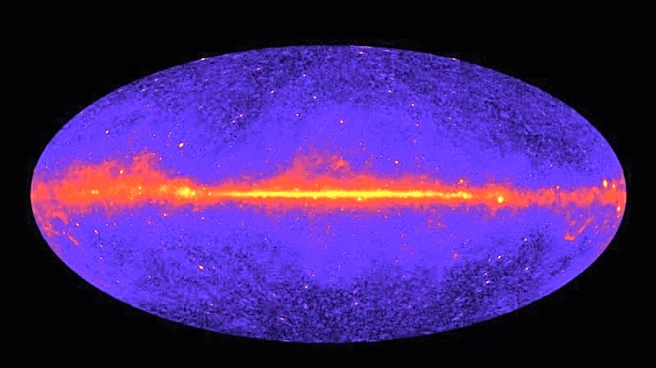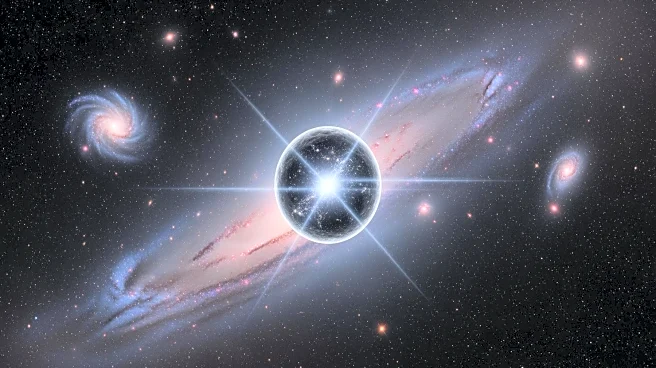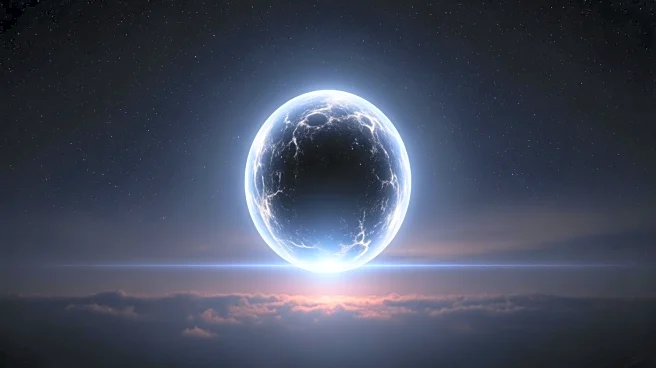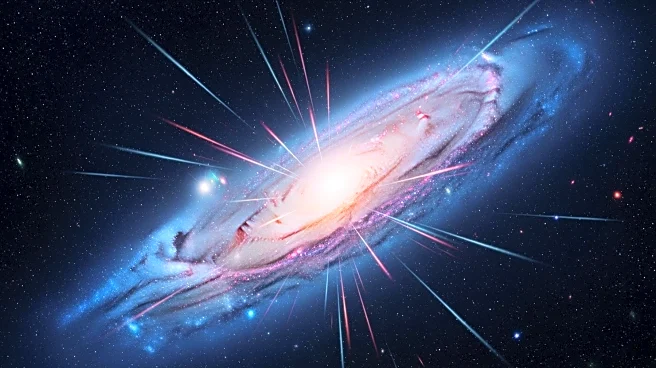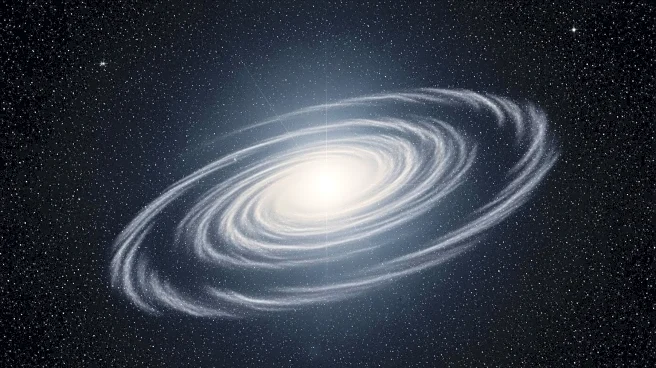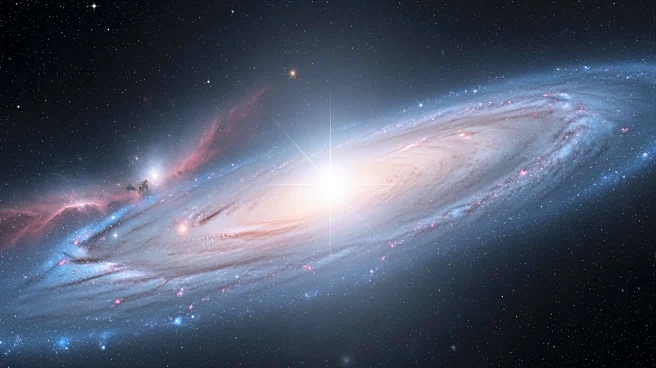What's Happening?
Astronomers have identified a small 'dark object' within the Einstein ring B1938+666, located 10 billion light-years from Earth. This discovery was made through gravitational lensing, a phenomenon where light from a distant galaxy is bent around a closer
foreground galaxy. The object, likely a clump of dark matter, was detected due to a subtle wobble in the radio waves of the outer ring. Researchers used data from multiple radio observatories, including the Green Bank Telescope and the Very Long Baseline Array, to achieve the equivalent observing power of an Earth-size telescope. This enabled them to detect the gravitational disturbance caused by the hidden object, which is around 1 million times more massive than the sun but significantly smaller than previous records for least-massive objects detected via gravitational lensing.
Why It's Important?
The discovery of this dark object is significant as it provides insights into the nature of dark matter, which constitutes 27% of the known universe. Gravitational lensing is one of the few methods available to detect and measure dark matter, making Einstein rings crucial in understanding its properties. The identification of such objects helps test the 'cold dark matter theory,' which suggests that dark matter clumps together at slow speeds, giving off low energy. This discovery could lead to more frequent identification of dark matter clumps, enhancing our understanding of the universe's composition and the role of dark matter within it.
What's Next?
Researchers anticipate that the methodology used in this discovery will facilitate the identification of more dark matter clumps around existing Einstein rings. The number of known rings is expected to increase, particularly with advancements in telescope technology, such as the James Webb Space Telescope. Continued research and observation will be crucial in confirming the existence of these clumps and understanding their distribution across galaxies, including the Milky Way.
Beyond the Headlines
The discovery raises questions about the prevalence of dark matter clumps in galaxies and their potential impact on cosmological models. It challenges existing theories about the distribution and behavior of dark matter, prompting further investigation into its properties and interactions with visible matter. This could lead to a paradigm shift in how scientists understand the universe's structure and evolution.
